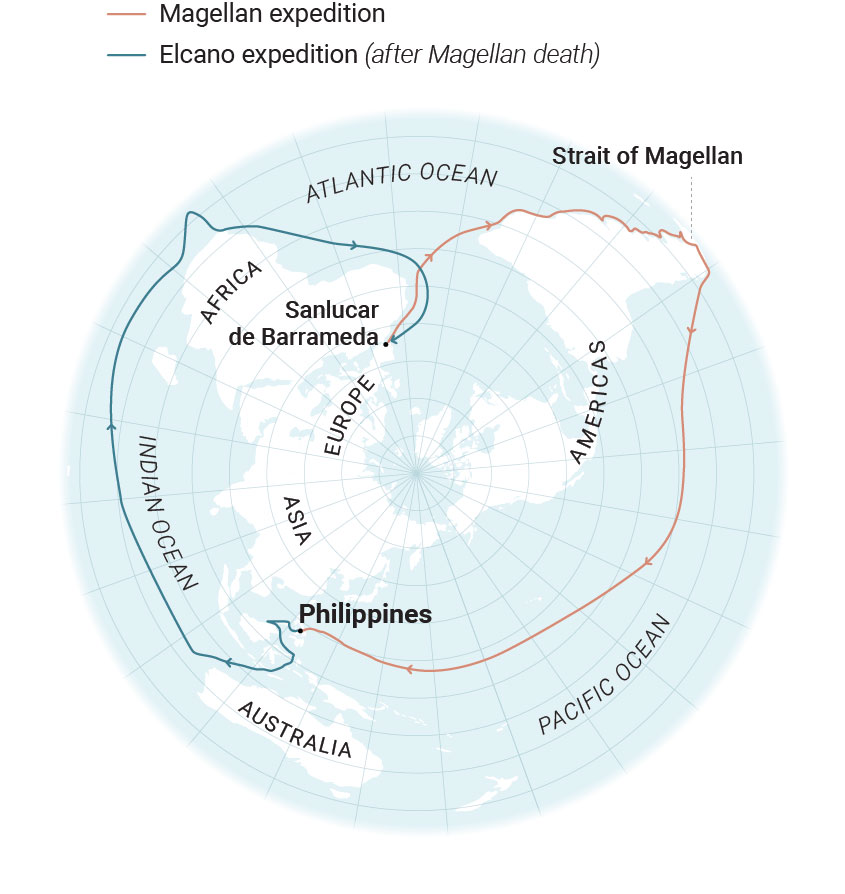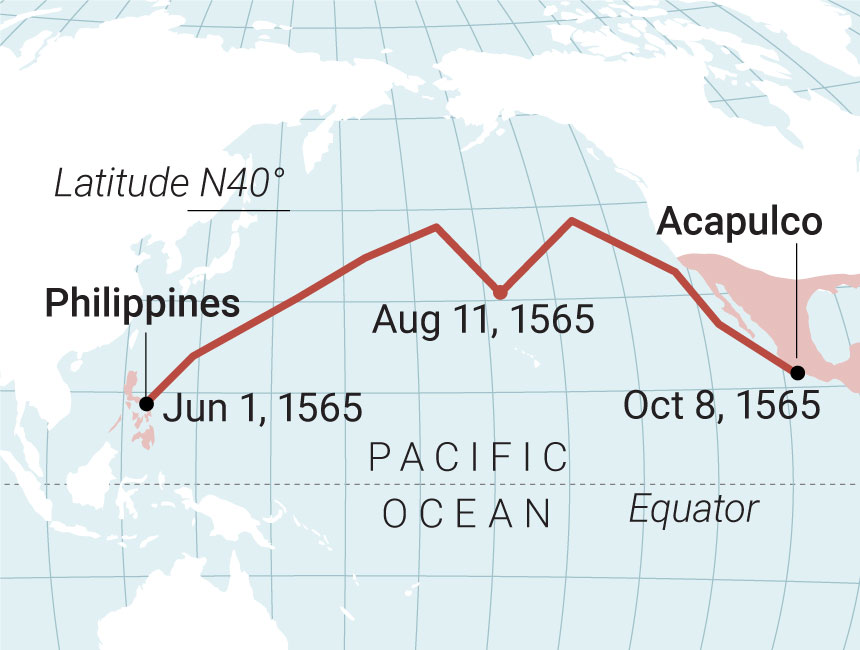Enjoy this story’s second chapter
“Galleon of China: flagship of trade over two centuries”
Discover how was built the China Ship and explore it deeply in detail, use the menu below
By Adolfo Arranz & Marco Hernandez
May 6, 2018

By Adolfo
Arranz

Marco
Hernandez
Globalisation is thought to have its beginnings in the 16th century when the Spanish silver dollar went transcontinental. Its acceptance as common currency arose when Spanish
navigators in the Philippines established a circular shipping route, known as the tornaviaje, between Asia and the Americas. More than 250 years of uninterrupted trade ensued
between Asia and the rest of the world. And the ships playing this route were known as China Ships
In 1519 a Spanish fleet of five vessels, under the command of Portuguese explorer Ferdinand Magellan, set sail from Seville in search of a route across the Pacific Ocean to East Asia. Magellan was killed in a battle during the voyage, leaving Spanish navigator Juan Sebastian Elcano and 18 surviving crew to become the first to circumnavigate the globe in a single expedition. Their expedition finally returned home to Spain in 1522

Magellan’s arrival in the Philippine Archipelago on March 15, 1521 was the first encounter between Spaniards and the people of the Philippines
Between 1526 and 1540, Spain sent two more expeditions to the Philippines, but neither completed the return journey to the Americas. A fourth expedition, led by Miguel Lopez de Legazpi, arrived in the Philippines in 1565. While many of the crew settled on the islands, one sailor named Andres de Urdaneta had a very important job to do

Andres de Urdaneta
(1498-1568)
Andres de Urdaneta was commissioned by King Philip II to lead an expedition back to New Spain as soon as possible, plot the return passage and establish trade routes across the Pacific Ocean

An Augustinian friar, sailor and author, Urdaneta would become one of the Pacific Ocean’s most knowledgeable European navigators. He sailed north, crossing the Pacific near 40°N latitude, arrived in Acapulco 130 days later from Cebu. From there, he discovered a return maritime route to the Americas and, more significantly, kept records and navigation charts of his odyssey
Because of his efforts, the world’s longest maritime route was established. It would endure for 250 years
Manila was ideally located for a major trading port of Chinese goods, such as silk and tea –which were highly coveted in Europe and America. Keeping pace with the trade boom, Manila’s Chinese community grew exponentially. And as traders hustled, sailors got much-needed rest before the arduous journey to Acapulco, Mexico, where Spanish galleons traded their exotic goods for silver coins
SHIPPING COMPLETION TIME
In terms of operating years and distances covered, the tornaviaje was the longest regular shipping line in history. This table estimates the number of ships that made the voyage and whether they survived
Discover how was built the China Ship and explore it deeply in detail, use the menu below
ABOUT THIS GRAPHIC
Here are some of the awards that this graphic has obtained
Society For News Design
Edition 40
Wanifra Asian Digital Media Awards
2018 Edition
Society For News Design
Edition 40
Here are some other digital native projects you might want to visit
Or just visit our graphics home page
This site has some features that may not be compatlibe with your browser. Should you wish to view content, switch browsers to either Google Chrome or Mozilla Firefox to get an awesome experience